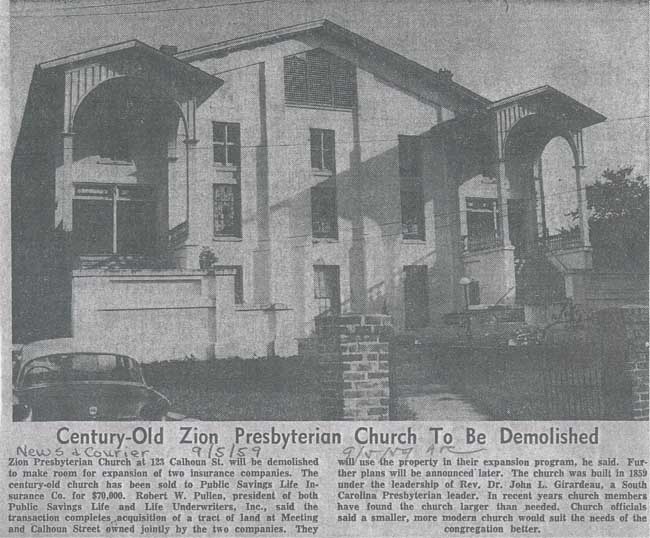STUDIES IN THE WESTMINSTER SHORTER CATECHISM
by Rev. Leonard T. Van Horn
A. Baptism is a sacrament wherein the washing with water, in the name of the Father, and of the Son, and of the Holy Ghost, doth signify and seal our engrafting into Christ, and partaking of the benefits of the covenant of grace, and our engagement to be the Lord’s.
Scripture References: Romans 6:4; Galatians 3:27; Ephesians 5:25-26; Matthew 28:19.
Questions:
- What are the essential points of the definition of baptism as found in our Standards?
The essential points of the definitions are:
(1) It is a washing with water,
(2) It is a washing in the name of the Father, Son and Holy Ghost,
(3) It is done with the design to signify and seal us and make us a partaker. - What is essential to baptism?
Baptism is essentially a washing with water. No particular mode of washing is essential for there is no one mode specified in the com- mand. Water is commanded because it is a natural symbol of moral purification and it was established as such in the ritual of Moses. It is a symbol of Christ’s blood being poured out for us and our hearts being sprinkled from an evil conscience?
- Who is the author of baptism?
The Lord Jesus Christ is the author of baptism and he instituted it just before His ascension into heaven (Matt. 28:19).
- In name are we baptized and what does this signify?
We are baptized in the name of the Father, Son, and Holy Ghost and this signifies our baptism in the authority, and into the faith, profession and obedience of the Father, Son, and Holy Ghost.
- What is meant by our engrafting into Christ?
When we are engrafted into Christ we are cut off from our old na- ture and become joined to Christ and’ therefore we can grow up in Him and bring forth fruit to Him. His righteousness is imputed to us (Galatians 3:27).
- What are the benefits of the covenant of grace we receive?
We are admitted into the visible church, our sins are remitted we are regenerated, and adopted and are raised to everlasting life.
A RIGHTLY USED SACRAMENT
Too many times, in churches subscribing to Reformed doctrine, the sacrament of baptism is taken too lightly. Too many parents are guilty of the attitude of thinking their task is done when they have their child baptised. Two many churches give themselves a pious pat on the back when another child is baptised and feel that their task is completed. The sacrament of baptism is used in the wrong way so many times.
It is good for us once in a while to review our beliefs about a particular doctrine. In regard to baptism, we need to be reminded again and again that a person may be saved without it and a person may be lost with it! We do not believe in the necessity of baptism for salvation. We do believe it is a sin to neglect it. Here we need to review what our Confession states regarding it: “…it be a great sin to condemn or neglect this ordinance.” Again, “The efficacy of baptism is not tied to that moment of time wherein it is administered; yet, notwithstanding, by the right use of this ordinance the grace promised is not only offered, but really exhibited and conferred by the Holy Ghost…”
I remember hearing one time a minister holding a “renewal of the vows of baptism” in his church. He had before him a group of some twenty or thirty parents. He asked them, “Have you, as parents, been impressing upon your children the fact that they need not be afraid to die because if they love the Lord Jesus and believe that Jesus shed His blood for them and they are trusting Him to wash away their sins, they will be saved?” It was a serious time and it was a serious question. It was certainly a making of a right use of this sacrament.
One of the troubles today in churches committed to the Reformed faith is that we forget our responsibility to teach our children (as part of our baptismal vows) that God does not show any mildness apart from the offer of His Son. The Bible says, “There is none other name under heaven whereby we must be saved.” We need to remember that there are two things that must be kept before our children, baptized in infancy, can be saved:
(1) The keeping of the covenant promises by the parents,
(2) Tne public profession of the child of Jesus Christ. And the last must be followed by fruit in the life.
John Murray put it well when he said, “To suppose that we may entertain any confidence respecting the covenant grace Signified and sealed by our baptism, if we are destitute of godly fear, if we break God’s covenant, and walk contrary to His commandments, would be contradiction.” May God help us to use this in a correct way!
Published by THE SHIELD and SWORD, INC.
Dedicated to instruction in the Westminster Standards, for use as a bulletin insert or other methods of distribution in Presbyterian churches.
Vol. 6, No. 11 (November 1967)
Leonard T. Van Horn, Editor.

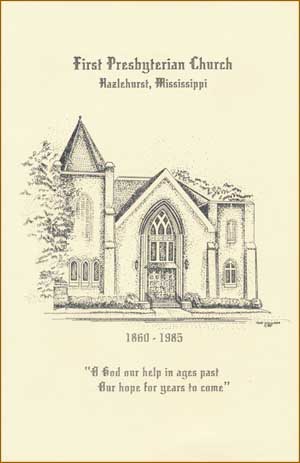 The initial entry in the Session Book of the Hazlehurst Church is as follows: “At a congregational meeting held on the fourth Sabbath of July, A.D. 1860 in the town of Hazlehurst, Reverend D. A. Campbell of the Presbytery of Clinton, of the Synod of Mississippi, proceeded to organize a church, to be received under the care of said Presbytery. The following persons were enrolled as members: M.W.Trawick, Elijah Peyton, A. W. Griffing, Mrs. Elizabeth Griffing, Mrs. Phebe I. Griffing, Mrs. Lucy M. Campbell, Mrs. Matilda Peyton.”
The initial entry in the Session Book of the Hazlehurst Church is as follows: “At a congregational meeting held on the fourth Sabbath of July, A.D. 1860 in the town of Hazlehurst, Reverend D. A. Campbell of the Presbytery of Clinton, of the Synod of Mississippi, proceeded to organize a church, to be received under the care of said Presbytery. The following persons were enrolled as members: M.W.Trawick, Elijah Peyton, A. W. Griffing, Mrs. Elizabeth Griffing, Mrs. Phebe I. Griffing, Mrs. Lucy M. Campbell, Mrs. Matilda Peyton.”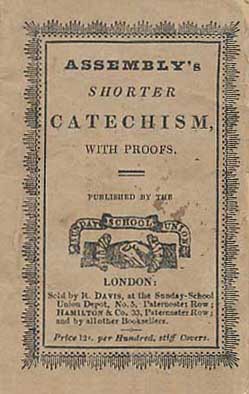 There has always been a plurality of definitive books explaining its matchless answers for Presbyterians. The books this author has in his personal library on the Shorter Catechism are the following: Thomas Watson: A Body of Divinity, The Ten Commandments, The Lord’s Prayer; Thomas Vincent: The Shorter Catechism Explained from Scripture; Alexander Whyte: The Shorter Catechism; John Whitecross: The Shorter Catechism Illustrated from Christian Biography and History; and a modern book, G.I. Williamson of The Shorter Catechism, Vol 1 & 2. These have all been effective in teaching and training both children and adults, especially the officers of the local church. I would like to commend to our readers the practical influences of this Shorter Catechism in this post.
There has always been a plurality of definitive books explaining its matchless answers for Presbyterians. The books this author has in his personal library on the Shorter Catechism are the following: Thomas Watson: A Body of Divinity, The Ten Commandments, The Lord’s Prayer; Thomas Vincent: The Shorter Catechism Explained from Scripture; Alexander Whyte: The Shorter Catechism; John Whitecross: The Shorter Catechism Illustrated from Christian Biography and History; and a modern book, G.I. Williamson of The Shorter Catechism, Vol 1 & 2. These have all been effective in teaching and training both children and adults, especially the officers of the local church. I would like to commend to our readers the practical influences of this Shorter Catechism in this post.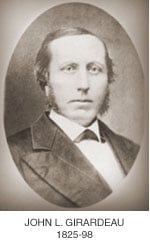 According to a longtime friend of the Rev. John L. Girardeau, it was about this time that “[Girardeau] began to receive overtures from the Presbyterian young
According to a longtime friend of the Rev. John L. Girardeau, it was about this time that “[Girardeau] began to receive overtures from the Presbyterian young 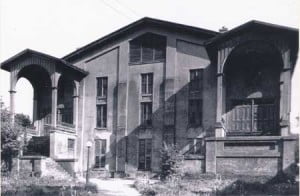 Girardeau wasted no time
Girardeau wasted no time